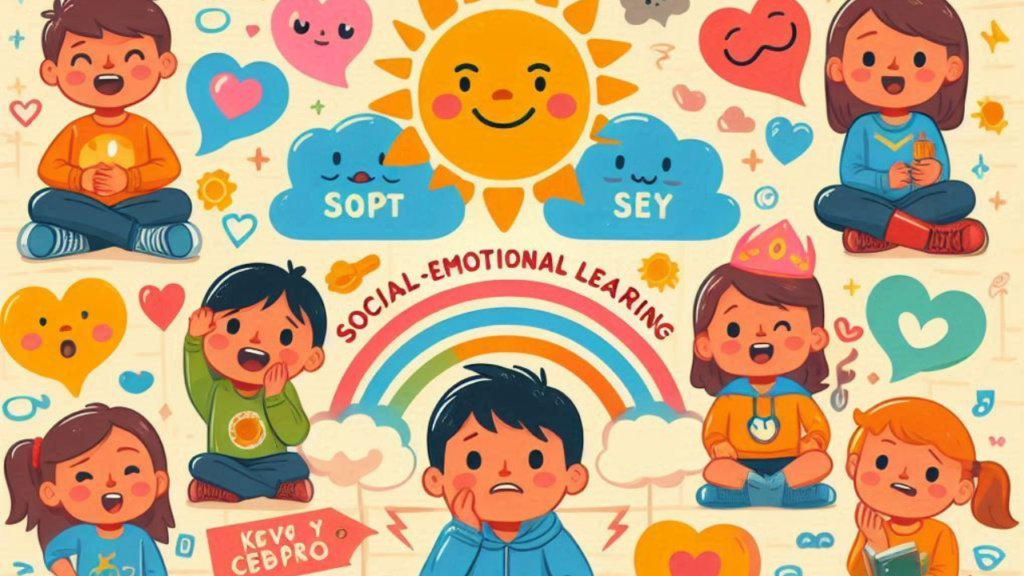Integrating Social-Emotional Learning in Early Childhood Education: Strategies for Nurturing Resilient and Empathetic Learners
Introduction to Early Childhood Education
Social-Emotional Learning (SEL) is a critical component of early childhood education. It focuses on developing essential life skills beyond academics, emphasizing emotional intelligence, self-awareness, empathy, and positive relationships. By integrating SEL into curriculums, educators can create a supportive environment that fosters holistic development. Here are key strategies for successful implementation:

1. Embed SEL Across the Curriculum
- Infuse SEL concepts into daily activities, stories, and playtime.
- Teach emotional vocabulary and encourage children to express their feelings.
- Integrate SEL themes into subjects like math, science, and art.
2. Promote Emotional Regulation
- Teach children coping strategies for managing emotions (e.g., deep breathing, counting).
- Create a calm-down corner where kids can self-regulate when upset.
- Model emotional regulation through teacher behaviour.
3. Build Empathy and Perspective-Taking
- Read books that highlight diverse experiences and feelings.
- Encourage role-playing to understand others’ viewpoints.
- Discuss real-life scenarios and how empathy impacts relationships.
4. Use Play-Based Learning
- Play is a powerful tool for SEL. Incorporate cooperative games, puppetry, and imaginative play.
- Teach conflict resolution during playtime.
- Foster collaboration and teamwork.
5. Involve Parents and Caregivers
- Conduct workshops to educate parents about SEL.
- Provide resources for SEL activities at home.
- Encourage open communication between educators and families.
6. Assess and Reflect
- Regularly evaluate SEL Early Childhood Education progress using age-appropriate tools.
- Reflect on classroom dynamics and adjust strategies as needed.
- Celebrate small victories and growth.
7. Policy Advocacy
- Advocate for SEL Early Childhood Education inclusion in educational policies.
- Collaborate with policymakers to prioritize SEL funding and training.
- Highlight the long-term benefits of SEL on mental health and academic success.

Real-life examples of Social-Emotional Learning (SEL) Early Childhood Education activities
- Emotions Bulletin Board:
- Create a bulletin board where students can learn to identify and name their emotions. Display visuals and labels for different feelings, helping kids express how they’re feeling throughout the day.
- Calm-Down Corner:
- Set up a designated space where students can go to regulate their emotions. This safe area allows them to take a break, practice deep breathing, and regain composure.
- Transition Time Check-Ins:
- Use transition times (between activities or classes) to check in on students’ mental and emotional well-being. Offer anxiety busters or reach out to those who may need support.
- Zones of Regulation:
- Teach students about the Zones of Regulation, a framework that helps them understand and manage their emotions. Use colours (blue, green, yellow, and red) to identify feelings and alertness levels.
- Mindfulness Practices:
- Circle Sharing:
- Create a circle where students take turns sharing their thoughts, feelings, or experiences. This promotes active listening and empathy.
- Identity Bingo:
- Play a game of Identity Bingo, where students find classmates who match certain characteristics (e.g., “Find someone who speaks more than one language”). This encourages understanding and appreciation of diversity.
Conclusion
Integrating SEL Early Childhood Education in early childhood education lays the foundation for resilient, empathetic learners. By nurturing emotional intelligence, we empower children to thrive academically, socially, and emotionally. Let’s prioritize SEL to create a brighter future for our youngest learners.
Remember, fostering empathy and resilience begins with small steps, but the impact lasts a lifetime. 🌟

Feel free to share this article with fellow educators and parents!
More Articles
- Transforming Education Policy: Bridging the Digital Divide in Post-Pandemic LearningRedefining Education Policy: Addressing the Digital Divide in Post-Pandemic Learning… Read more: Transforming Education Policy: Bridging the Digital Divide in Post-Pandemic Learning
- “Revolutionizing Inclusive Education: Cutting-Edge Practices for Empowering Diverse Learners in Mainstream Classrooms” Advancing Inclusive Education: Innovative Practices for Supporting Diverse Learners in… Read more: “Revolutionizing Inclusive Education: Cutting-Edge Practices for Empowering Diverse Learners in Mainstream Classrooms”
- Revolutionizing E-Learning: Harnessing AI and Machine Learning for Personalized EducationThe Future of E-Learning: Leveraging AI and Machine Learning to… Read more: Revolutionizing E-Learning: Harnessing AI and Machine Learning for Personalized Education
- Mastering Blended Learning: Harmonizing Horizons for Unparalleled Student SuccessHarmonizing Horizons: Mastering Blended Learning for Student Success This comprehensive… Read more: Mastering Blended Learning: Harmonizing Horizons for Unparalleled Student Success
- Empowering Learners in Distance Education: Unleashing Engagement in Digital Classrooms“Empowering Learners in Distance Education: Unleashing Engagement in Digital Classrooms”… Read more

